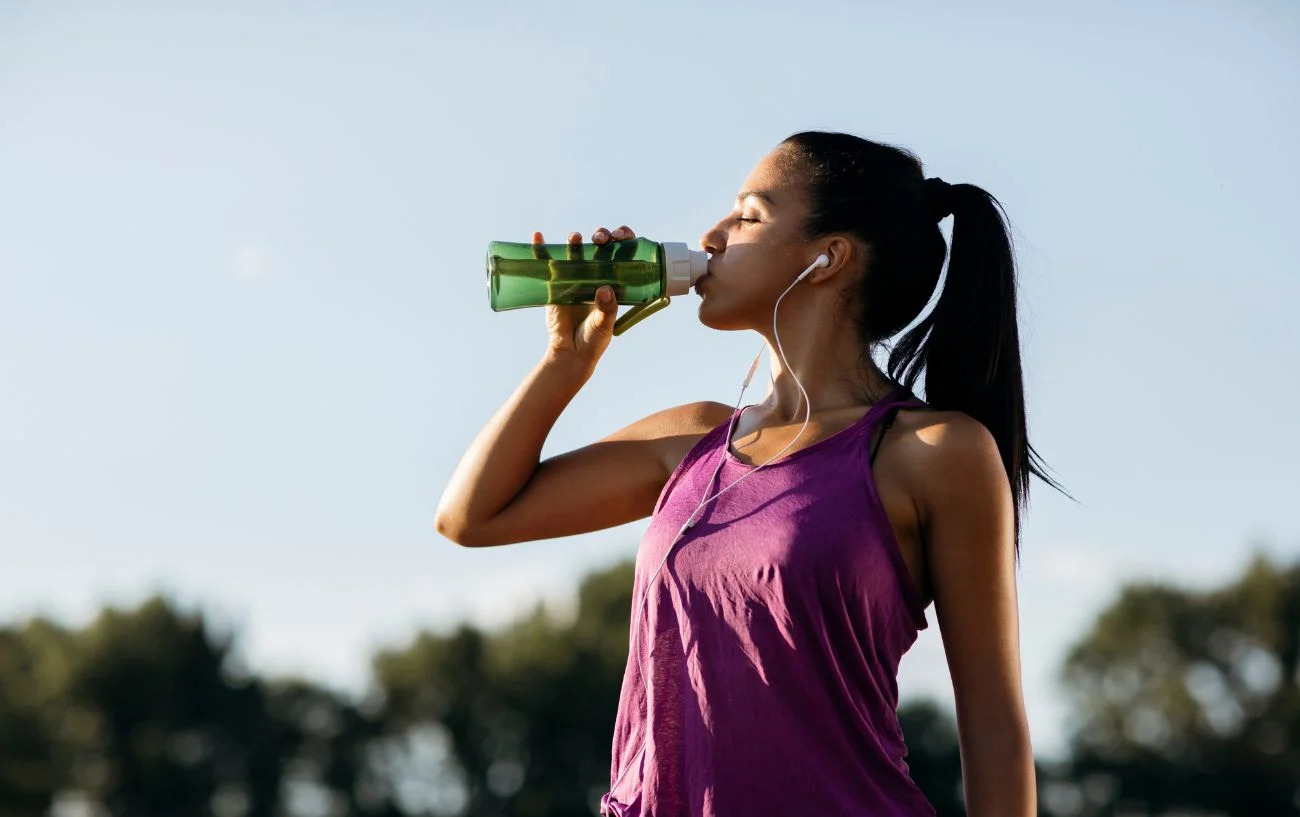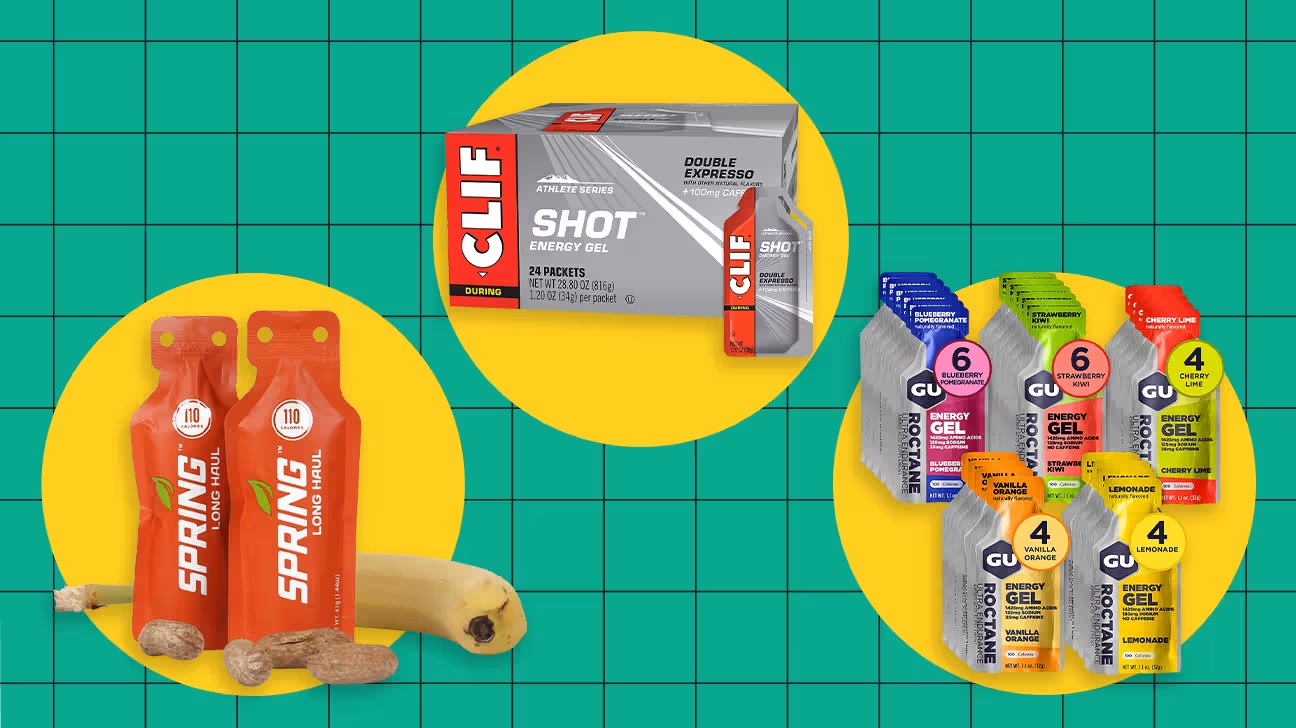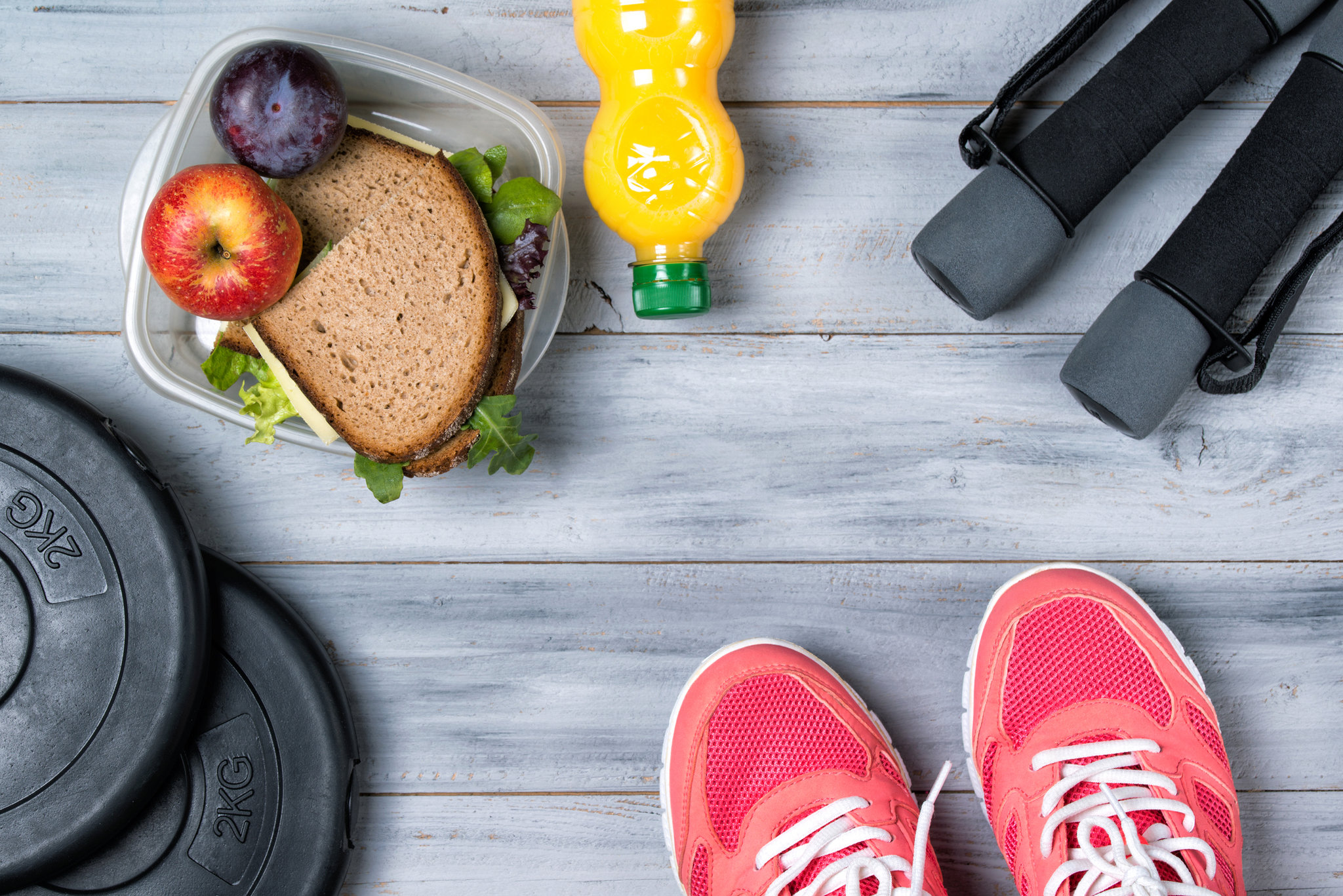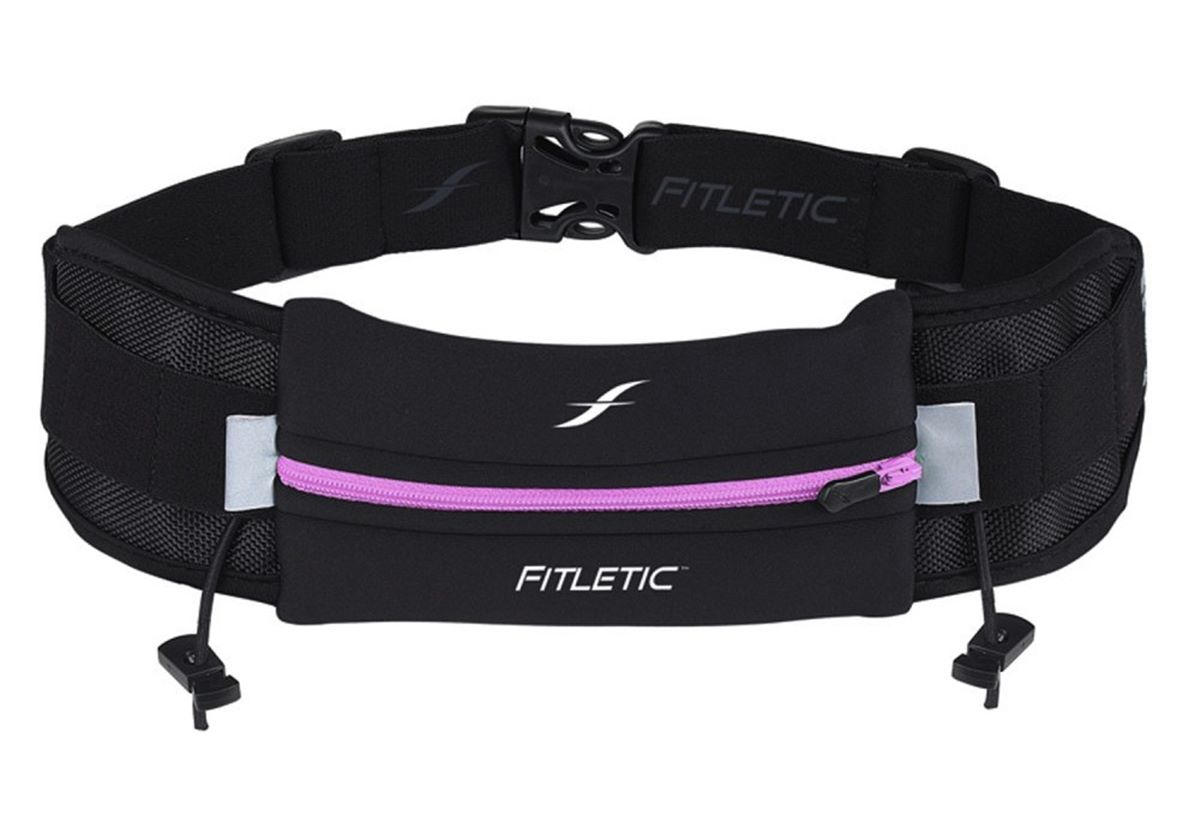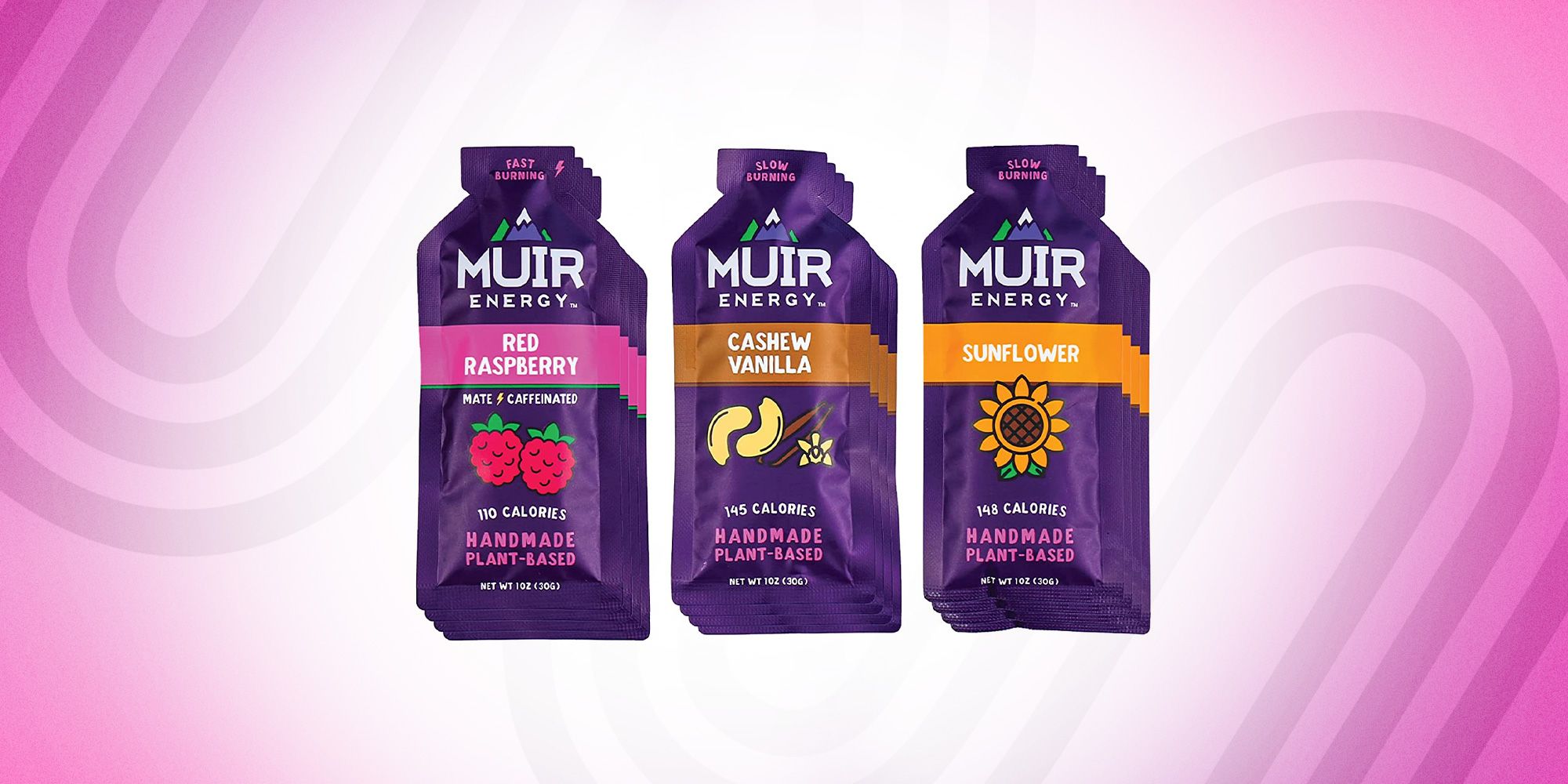

Featured
What Are Energy Gels For
Modified: August 19, 2023
Discover the benefits and uses of featured energy gels for enhanced performance during workouts and endurance activities.
Introduction
When it comes to fueling our bodies for physical activities, nutrition plays a crucial role. Whether you’re a professional athlete, an avid runner, or someone who enjoys engaging in intense workouts, finding the right source of energy is essential. One popular option that many athletes and fitness enthusiasts turn to is energy gels.
Energy gels are small, convenient packets of concentrated carbohydrates that are designed to provide a quick and easily digestible source of energy during exercise. These gels are formulated to deliver a burst of energy, helping to sustain performance and prevent fatigue during prolonged activities such as long-distance running, cycling, and endurance events.
In recent years, energy gels have gained popularity among athletes and fitness enthusiasts due to their effectiveness in improving performance and enhancing endurance. They are a convenient and efficient way to replenish energy stores and maintain optimal performance levels during intense physical activities.
But what exactly are energy gels, and how do they work? Are there any side effects to be aware of? In this article, we’ll delve into the world of energy gels, exploring their purpose, benefits, usage, and potential side effects. We’ll also provide some tips on choosing the right energy gel to suit your individual needs and preferences.
So, if you’re curious about incorporating energy gels into your fitness routine or if you simply want to learn more about this popular sports nutrition product, keep reading. We’ll uncover the facts and help you make informed decisions about whether energy gels are right for you.
What Are Energy Gels?
Energy gels are gel-like substances that are specifically formulated to provide a concentrated source of carbohydrates, electrolytes, and often caffeine. These gels are designed to be consumed during physical activities to replenish energy stores and maintain optimal performance.
Typically, energy gels come in small, single-serve packets that are easy to carry and consume on-the-go. They are popular among endurance athletes and those involved in activities that require sustained effort and energy expenditure, such as running, cycling, and triathlons.
The primary ingredients in energy gels are carbohydrates, which fuel our muscles and provide the energy needed to perform at our best. Most energy gels contain a combination of simple and complex carbohydrates, such as maltodextrin, fructose, and glucose. These carbohydrates are quickly absorbed by the body and converted into glucose, a readily available form of energy.
In addition to carbohydrates, energy gels often contain electrolytes such as sodium and potassium. These electrolytes help maintain proper fluid balance, prevent dehydration, and avoid cramping during prolonged exercise. Some energy gels also include caffeine, a stimulant that can increase alertness and enhance performance.
Energy gels are intended to be consumed without water, as they are already in a semi-liquid form that is easy to swallow. They are designed to be quickly and easily digested, providing a rapid source of fuel to the muscles. Energy gels offer a convenient alternative to carrying and eating solid food during exercise, as they are lightweight, portable, and require no chewing.
It’s important to note that energy gels should not replace a well-balanced diet or be used as a meal replacement. They are intended for use during intense physical activities to provide an extra boost of energy and should be consumed in conjunction with a healthy and balanced diet.
In the next section, we will explore how energy gels work and why they are beneficial for athletes and fitness enthusiasts.
How Do Energy Gels Work?
Energy gels work by providing a concentrated source of easily digestible carbohydrates, electrolytes, and sometimes caffeine, to rapidly replenish energy stores during physical activities. When consumed, energy gels are quickly absorbed by the body and transported to the muscles, where they are converted into energy, helping to sustain performance and delay fatigue.
The carbohydrates found in energy gels are broken down into glucose, which is the body’s primary source of fuel during exercise. Glucose is utilized by the muscles to perform contractions and power movement. The combination of simple and complex carbohydrates in energy gels ensures a steady supply of glucose to the muscles, providing immediate and sustained energy.
Electrolytes, such as sodium and potassium, are essential minerals that help regulate fluid balance in the body. During intense exercise, electrolytes are lost through sweat, and consuming energy gels that contain electrolytes helps to replenish these essential minerals and maintain proper hydration. Adequate electrolyte levels also contribute to proper muscle function and prevent cramping.
In some energy gels, caffeine is included as an additional performance-enhancing ingredient. Caffeine is a stimulant that can increase alertness, improve focus, and reduce perceived exertion. It can also enhance endurance by reducing the perception of fatigue and increasing the utilization of fat as an energy source.
To use energy gels effectively, it is important to time their consumption strategically. Energy gels are most beneficial when consumed before or during prolonged physical activity. Typically, athletes and fitness enthusiasts consume energy gels every 30-45 minutes during exercise to maintain a continuous supply of energy.
It’s worth noting that individual preferences and tolerances can vary when it comes to energy gels. Some people may prefer to consume energy gels in smaller amounts, while others may find benefit from consuming larger quantities. It’s essential to find what works best for you through trial and error during training sessions.
In the next section, we will explore the various benefits of incorporating energy gels into your fitness routine.
Benefits of Energy Gels
Energy gels offer a range of benefits for athletes and fitness enthusiasts, making them a popular choice for maintaining optimal performance during physical activities. Let’s explore some of the key advantages of incorporating energy gels into your fitness routine.
- Quick and Easy Energy: One of the primary advantages of energy gels is their ability to provide a rapid source of energy. The concentrated carbohydrates in energy gels are easily digestible and quickly absorbed by the body, delivering an almost immediate energy boost to fuel your performance.
- Portable and Convenient: Energy gels are compact, lightweight, and easy to carry, making them a convenient choice for athletes on the go. They can be easily stashed in pockets, belts, or backpacks, allowing for quick and easy access during workouts or competitions.
- Customizable Intake: Energy gels come in various flavors and formulations, allowing athletes to choose a gel that suits their taste preferences and provides the desired nutritional profile. This customization enables individuals to tailor their energy intake based on their specific needs and requirements.
- Improved Endurance: By replenishing energy stores, energy gels can help improve endurance during prolonged physical activities. The steady supply of carbohydrates keeps the muscles fueled and delays the onset of fatigue, allowing athletes to perform at their best for longer durations.
- Enhanced Performance: The combination of carbohydrates and electrolytes in energy gels not only sustains energy levels but also supports optimal muscle function. Electrolytes, such as sodium and potassium, aid in fluid balance and prevent muscle cramps, thus contributing to improved performance.
- Mental Focus: Some energy gels contain caffeine, which acts as a stimulant to enhance mental alertness and focus. This can be particularly beneficial during long and grueling workouts or races when maintaining concentration and mental acuity is crucial.
It’s important to note that while energy gels provide significant benefits, they are not a substitute for a well-rounded and balanced diet. They should be used as a supplement during intense exercise and should be consumed in conjunction with proper hydration and other nutritional sources.
Now that we’ve explored the benefits of energy gels, let’s move on to the next section, where we discuss when it is appropriate to use energy gels during physical activities.
When to Use Energy Gels
Knowing when to use energy gels during physical activities is essential for maximizing their benefits and avoiding unnecessary consumption. Here are some key moments when incorporating energy gels into your fitness routine can be advantageous:
- Long-Distance Endurance Activities: Energy gels are particularly beneficial during prolonged and intense endurance exercises such as long-distance running, cycling, swimming, or triathlons. These activities often deplete glycogen stores, and consuming energy gels can help replenish energy levels and sustain performance.
- Intense Training Sessions: If you are engaging in high-intensity interval training (HIIT) or any other form of vigorous exercise, energy gels can provide a quick and easily digestible source of energy to support your efforts. This can be especially helpful during extended workouts or multiple training sessions in a single day.
- Competition Events: Whether you’re participating in a marathon, a cycling race, or a team sport event, energy gels can be an integral part of your race-day fueling strategy. Consuming energy gels at specific intervals can help maintain energy levels, delay fatigue, and give you the edge you need to perform at your best.
- During Prolonged Fasting or Low-Carb Diets: If you are following a fasting protocol or a low-carbohydrate diet, energy gels can provide a convenient source of quick energy without significantly disrupting your meal plan. They can help prevent energy crashes and support your performance during workouts while adhering to your dietary restrictions.
- Periods of Low Energy: If you find yourself feeling fatigued or low on energy during a workout, an energy gel can help provide an immediate boost to get you back on track. This is particularly beneficial during long training sessions or when you need a pick-me-up during a challenging workout.
It’s important to remember that energy gels should not be used as a substitute for proper nutrition or a well-balanced diet. They are meant to supplement your overall fueling strategy during specific moments of increased energy demand. It is crucial to listen to your body, experiment with various gel brands and flavors, and determine what works best for you in terms of timing and quantity.
In the next section, we will explore how to properly use energy gels during your workouts and competitions.
How to Use Energy Gels
Using energy gels effectively requires proper timing and consumption techniques to maximize their benefits. Here are some tips on how to use energy gels during your workouts and competitions:
- Read and Follow the Instructions: Before using any energy gel, read the instructions provided by the manufacturer. Each gel may have specific recommendations on when and how to consume it. Follow these instructions to ensure you get the most out of the product.
- Timing is Key: To optimize the benefits of energy gels, consume them strategically. Start using energy gels during longer workouts or training sessions lasting more than an hour. Begin by taking a gel around 45-60 minutes into the activity and continue taking them every 30-45 minutes thereafter, depending on your individual needs and preferences.
- Stay Hydrated: It is essential to drink water along with energy gels to aid in their digestion and absorption. Hydration helps maintain optimal fluid balance and ensures proper assimilation of the gel’s nutrients. Sip water throughout your activity, but avoid consuming large amounts at once, as it may cause digestive discomfort.
- Practice During Training: Before using energy gels during a race or competition, it is recommended to practice incorporating them into your training sessions. This allows you to gauge the impact on your performance, assess tolerance, and determine the optimal timing and quantity that works best for you.
- Combine with Other Fuel Sources: Energy gels should be used as part of a comprehensive fueling strategy. While they provide a concentrated source of carbohydrates, it is still important to incorporate other sources of nutrition, such as whole foods and sports drinks, to ensure a well-rounded intake of macronutrients.
- Avoid Overconsumption: While energy gels are designed to provide a quick source of energy, it is crucial not to overconsume them. Consuming too many gels or consuming them too frequently can lead to gastrointestinal distress. It’s important to find the right balance and listen to your body’s cues.
Remember, what works for one person may not work for another, so it is important to experiment with different gel brands, flavors, and consumption strategies during your training to find what suits you best. Pay attention to your body’s response and make adjustments as needed.
In the next section, we will explore the common ingredients found in energy gels and their potential effects.
Common Ingredients in Energy Gels
Energy gels typically contain a combination of ingredients that provide a concentrated source of carbohydrates, electrolytes, and sometimes caffeine. Here are some of the common ingredients you can expect to find in energy gels:
- Carbohydrates: The main component of energy gels is carbohydrates, which are critical for fueling your muscles during physical activities. The types of carbohydrates used can vary but often include maltodextrin, fructose, and glucose. These carbohydrates are easily digested and quickly converted into glucose, providing an immediate source of energy.
- Electrolytes: Energy gels commonly contain electrolytes such as sodium, potassium, and magnesium. Electrolytes play a vital role in maintaining fluid balance, which is crucial for hydration. During prolonged exercise, electrolytes are lost through sweat, and replenishing them through energy gels helps prevent cramping and supports proper muscle function.
- Caffeine: Some energy gels contain caffeine, a natural stimulant that can increase alertness and enhance performance. Caffeine acts on the central nervous system, reducing the perception of fatigue and increasing endurance. It can also enhance focus and mental acuity, helping you stay determined and sharp during workouts or competitions.
- Flavorings: To improve taste and palatability, energy gels often include natural or artificial flavorings. These flavorings can range from fruit flavors like berry or citrus to more unique options like chocolate or coffee. The presence of flavorings in energy gels can make them more enjoyable to consume during intense physical activities.
- Preservatives and Stabilizers: Some energy gels may contain preservatives and stabilizers to prolong shelf life and maintain the texture and consistency of the product. These additives help prevent spoilage and ensure that the gel remains easy to consume and digest, even in different temperature conditions.
It’s important to note that the specific combination and quantity of ingredients can vary among different brands and flavors of energy gels. Some gels may have additional additives like vitamins or amino acids, while others may be more focused on providing a clean and minimal ingredient profile. Always check the label for a complete list of ingredients and choose the gel that aligns with your preferences and dietary needs.
In the next section, we will discuss potential side effects to be aware of when using energy gels.
Potential Side Effects of Energy Gels
While energy gels can offer numerous benefits, it’s important to be aware of potential side effects that may occur, especially when they are not used appropriately. Here are some potential side effects of energy gels:
- Gastrointestinal Distress: Consuming energy gels in large quantities or on an empty stomach can lead to gastrointestinal discomfort, such as bloating, nausea, or diarrhea. It is important to follow recommended serving sizes and consume energy gels with adequate hydration and alongside other sources of nutrition to avoid these issues.
- Dehydration: Energy gels that contain high amounts of carbohydrates may require additional water for proper digestion and absorption. Failing to drink enough water when consuming energy gels can lead to dehydration. It’s crucial to stay adequately hydrated and sip water alongside the gel to maintain optimal fluid balance.
- Caffeine Sensitivity: Energy gels that contain caffeine can cause side effects for individuals who are sensitive to caffeine. These side effects may include jitteriness, increased heart rate, irritability, or difficulty sleeping. It’s important to be aware of your caffeine tolerance and choose gels with or without caffeine accordingly.
- Allergies or Intolerances: Some energy gels may contain ingredients that individuals may be allergic to or intolerant of, such as gluten or specific fruits. It’s essential to carefully read the label and ingredients list to check for any potential allergens or ingredients that may cause adverse reactions.
- Incompatible with Certain Medications or Health Conditions: Certain medications or health conditions may interact negatively with the ingredients in energy gels. It’s important to consult with a healthcare professional before incorporating energy gels into your routine if you have any underlying health conditions or are taking medications.
To minimize the risk of experiencing side effects, start by incorporating energy gels gradually into your routine. Begin with small amounts during training sessions and monitor how your body responds. If you experience any discomfort or adverse effects, discontinue use and consult a healthcare professional.
Additionally, it’s worth considering that energy gels should be used as a supplement to a well-rounded diet and not as a replacement for whole foods. A balanced and varied diet should provide the necessary nutrients for optimal performance and recovery, and energy gels should be used strategically to support specific needs during physical activities.
Now that we’ve explored the potential side effects, let’s move on to the next section, where we discuss how to choose the right energy gel for your individual needs.
Choosing the Right Energy Gel
With a wide array of energy gels available on the market, it can be overwhelming to choose the right one for your specific needs. Here are some factors to consider when selecting an energy gel that aligns with your preferences and requirements:
- Ingredients: Read the ingredient list carefully to ensure that the energy gel does not contain any allergens or ingredients that you may be sensitive to. Consider whether you prefer natural or artificial flavors, and if you have any specific dietary restrictions, choose a gel that aligns with those requirements.
- Carbohydrate Content: Different energy gels have varying amounts of carbohydrates. Consider your activity duration and intensity to determine the appropriate carbohydrate content. Longer and more intense activities may require energy gels with higher carbohydrate concentrations to sustain energy levels.
- Flavor and Texture: Energy gels come in a variety of flavors and textures. Experiment with different flavors to find ones that you enjoy and find palatable during exercise. Consider whether you prefer a more liquid or thicker gel consistency, as this can also impact your experience while consuming it.
- Caffeine Content: If you are sensitive to caffeine or prefer to limit your caffeine intake, choose energy gels that are caffeine-free or have lower caffeine levels. On the other hand, if you find caffeine to be beneficial for your performance, select gels that provide the desired amount of caffeine per serving.
- Brand Reputation: Consider the reputation and credibility of the brand producing the energy gel. Look for brands that prioritize quality, safety, and transparency in their production processes. Reading reviews and seeking recommendations from other athletes or trusted sources can be helpful in making an informed decision.
- Convenience and Packaging: Evaluate the packaging and ease of use of the energy gel. Look for tear-off packets that are easy to open, especially during intense physical activities. Consider whether the gel is portable and whether it can be easily carried in pockets or belts for quick and convenient access.
It’s important to note that personal preference plays a significant role in selecting the right energy gel. What works for one person may not work for another, so it may take some trial and error to find the gel that suits your taste, provides the necessary nutritional support, and meets your specific requirements.
Remember, energy gels are intended to supplement your overall fueling strategy, so it’s important to focus on maintaining a well-rounded and balanced diet, proper hydration, and incorporating other sources of nutrition along with the gels.
In the next section, we will summarize the key points discussed in this article and reiterate the benefits of incorporating energy gels into your fitness routine.
Conclusion
Energy gels have become a popular choice among athletes and fitness enthusiasts for their ability to provide a quick and convenient source of energy during physical activities. They offer numerous benefits, including a rapid energy boost, portability, and the ability to enhance endurance and performance.
Understanding how energy gels work and when to use them is crucial for utilizing them effectively. They are most beneficial during long-distance endurance activities, intense training sessions, competition events, prolonged fasting or low-carb diets, and moments of low energy during workouts.
To optimize the benefits of energy gels, it’s important to use them in conjunction with a well-rounded diet and hydration plan. Timing their consumption strategically, staying hydrated, and practicing with different gels during training can help optimize their benefits and minimize potential side effects.
When choosing an energy gel, consider factors such as ingredients, carbohydrate content, flavor and texture, caffeine content, brand reputation, and packaging convenience. Personal preference and individual needs should guide your decision to find the energy gel that best suits you.
Overall, energy gels can be a valuable tool in your fitness arsenal, helping you improve endurance, sustain performance, and reach your goals. However, it’s important to remember that energy gels should complement a well-rounded approach to nutrition and not replace whole foods or proper hydration.
By incorporating energy gels strategically into your fitness routine, you can tap into their benefits and experience enhanced energy levels, improved endurance, and optimized performance. So, experiment, find what works best for you, and enjoy the boost they provide during your physical activities.
